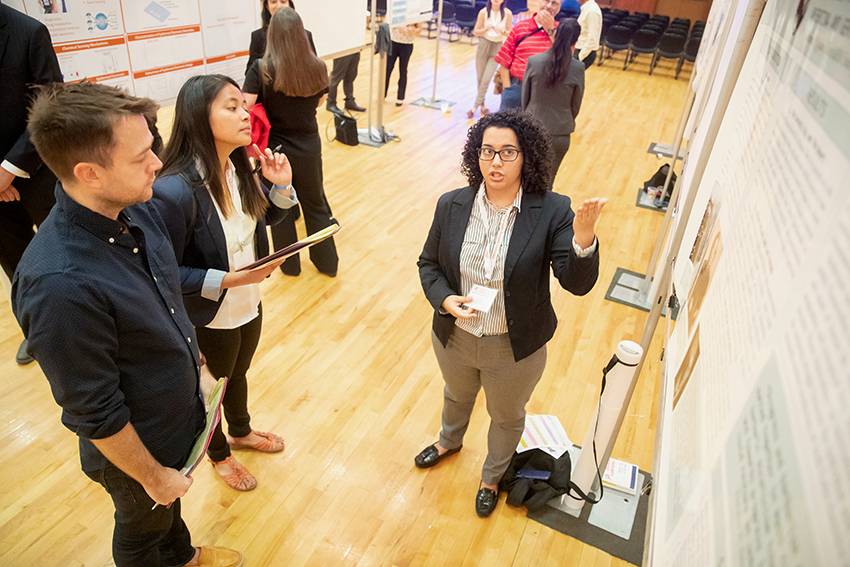Over 100 students across Texas presented at the first Capital of Texas Undergraduate Research Conference last Saturday, the first student-organized interdisciplinary conference held at UT.
The conference was organized through a collaboration between the Research Student Advisory Council, The Texas Undergraduate Research Journal and Senate of College Councils. Chris Apgar, neuroscience junior and co-president of the advisory council, said one of the goals this year was to emphasize diversity.
“We wanted to expand upon what undergraduate research really is,” Apgar said. “The diversity and interdisciplinary nature of research is something that hasn’t really been spotlighted, and we’ve tried to implement and expand that concept to reach all of Texas through our conference.”
The Daily Texan spoke to three of the poster finalists about their work and undergraduate research experience.
Degradation and Alzheimer’s Disease
Many neurodegenerative diseases, such as Alzheimer’s Disease, are characterized by a cell’s inability to degrade, or break down, damaged proteins. Biochemistry senior Erin Choi studies the factors that determine how exactly these proteins are selected for degradation in healthy brains.
“There is a molecular machine in your body that is responsible for degrading damaged proteins because we don’t want those circulating in your body,” Choi said. “There are two certain requirements for a protein to be degraded, but some proteins still manage to escape degradation.”
Choi’s research looked into other possible components that selected which proteins would be degraded, such as the shape. Choi said she found proteins often followed the “Goldilocks” rule: Proteins couldn’t be degraded if they were too big or too small, but ones that fit perfectly into the molecule responsible for degradation could.
“Being able to define all the rules and regulations for a protein to be degraded is important so we can study these neurodegenerative diseases and understand why damaged proteins aren’t being degraded,” Choi said.
A wearable that may diagnose disease
The future of wearables could expand beyond basic health monitoring and fitness awareness, according to biomedical engineering senior Ruchika Mitbander. New devices could detect chemicals in the body.
“We want to design a device that’s capable of continuously monitoring sweat levels for the purpose of detecting different concentrations of biomolecules, such as a drug or electrolyte,” Mitbander said.
In wearables, such as Fitbit and Apple Watches, there is huge potential for real-time and continuous monitoring of various health aspects, Mitbander said. This idea could be expanded into chemical sensing devices, which could then be used to monitor drug metabolism or diagnose patients using disease markers.
“We want to ultimately be able to integrate the electrochemical analysis on the device itself so that it can be a portable, wearable device,” Mitbander said.
Melatonin as a treatment for diabetes
Roman Sanchez Martinez is a biomedical science junior from UT Rio Grande Valley. Martinez has been researching the effectiveness of melatonin as a treatment method for diabetes.
“I relate a lot to this research because in my culture, there’s a lot of obesity because of the food that we eat,” Sanchez said. “I wanted to find other ways to treat obesity and diabetes that are cheap.”
According to Martinez, melatonin is a hormone naturally produced in the body and is available in the form of an over-the-counter supplement.
“I did experiments to see if melatonin could change some of the characteristics in fat cells, and in the future, we hope to expand the research to humans,” Martinez said. “If it’s really going to work, it’ll be a potential treatment for people that don’t have a lot of economic resources.”
The conference also included a keynote speech from John Goodenough, professor in the Department of Mechanical Engineering, as well as PowerPoint presentations from student researchers.















